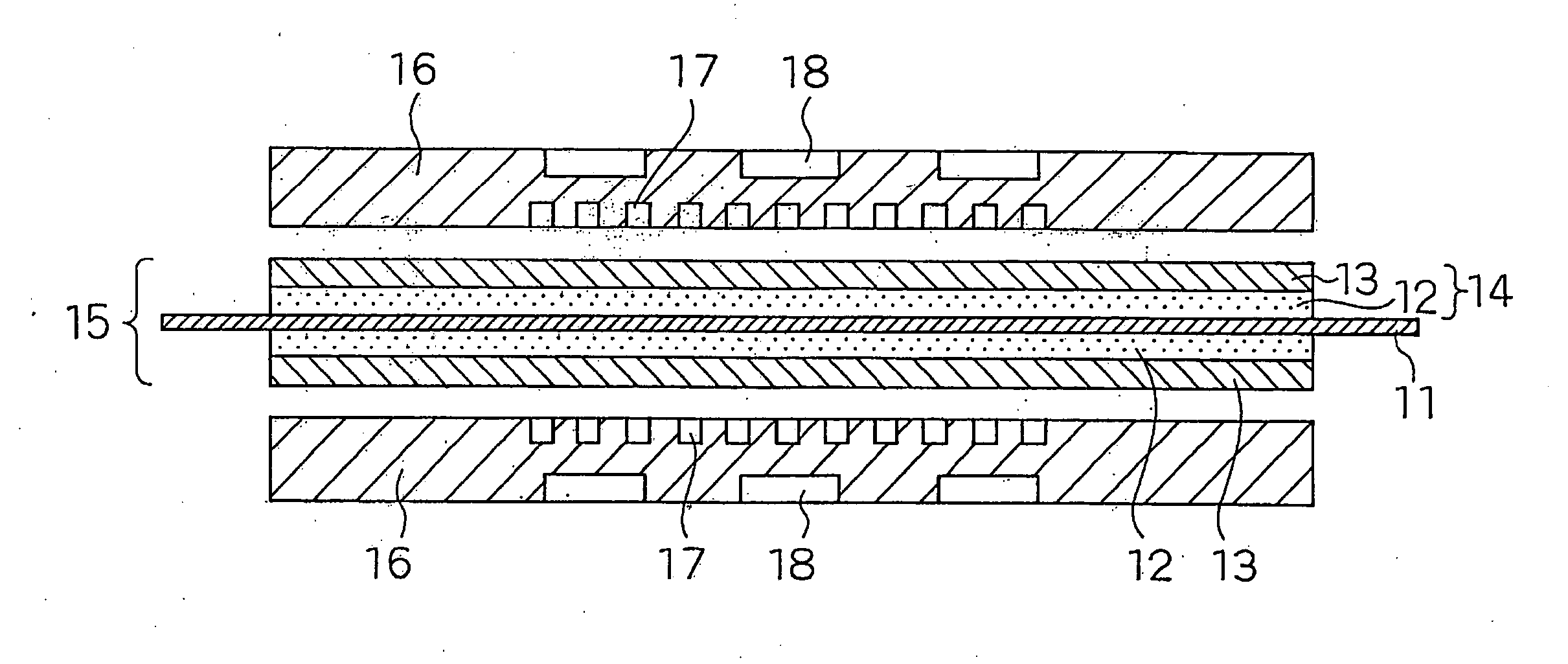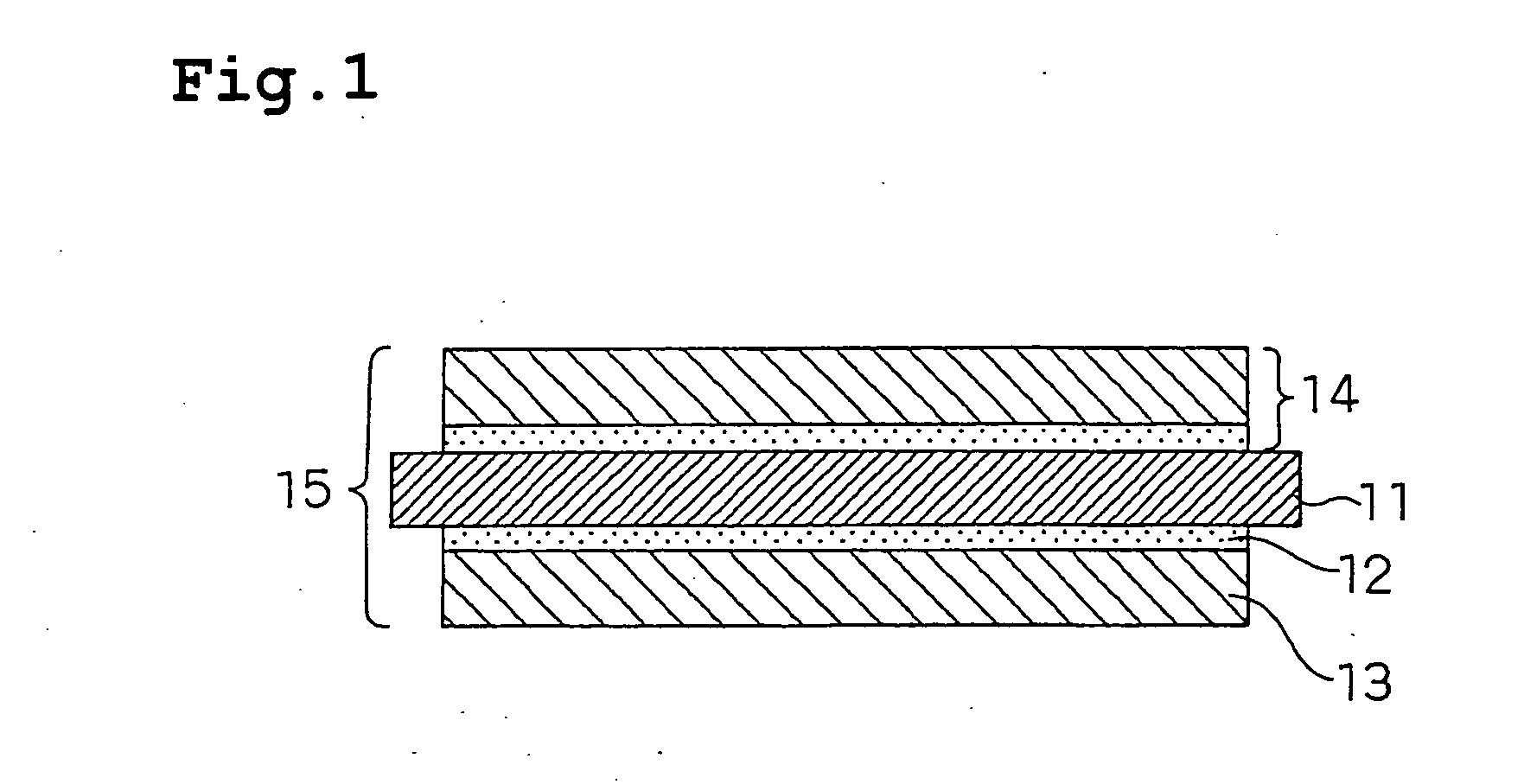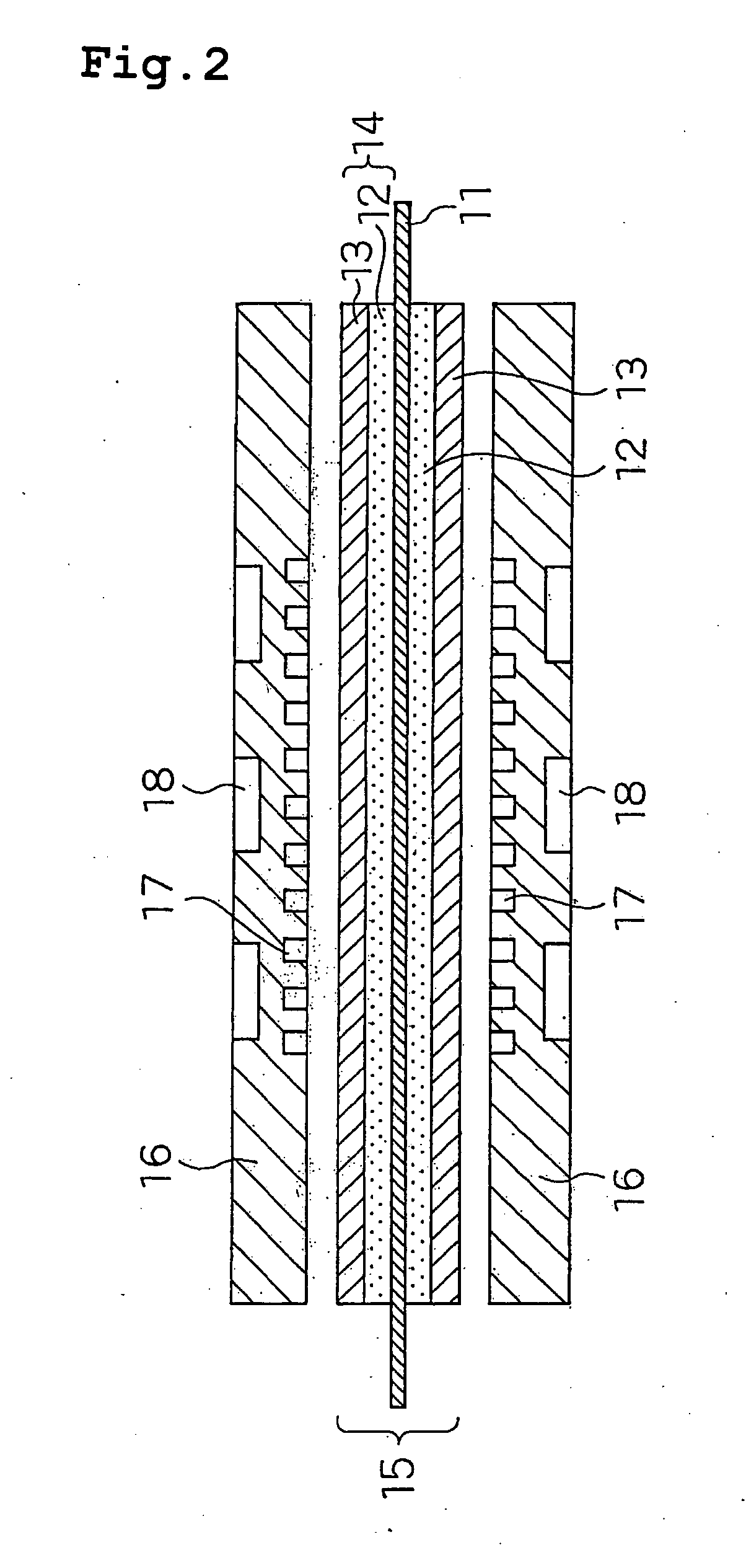Polymer Electrolyte Fuel Cell
- Summary
- Abstract
- Description
- Claims
- Application Information
AI Technical Summary
Benefits of technology
Problems solved by technology
Method used
Image
Examples
example 1
[0117] At first, Pt volume density in the respective catalyst layer 102 of the anode 109 and the cathode 110 was changed, and while maintaining the Pt volume density in the catalyst layer 102 of the cathode 110 constant, the catalyst layer thickness of the cathode 110 was investigated by changing the coating amount of the catalyst.
[0118] Where Pt density in the catalyst layer 102 of the anode 109 was 5 and 6 g / cm3, catalyst layers were prepared using Pt powder having a size of crystallite of 10 and 15 nm. Further, where Pt density was 0.8 and 1 g / cm3, they were prepared by adding 5 and 6% of a carbon powder (conductive carbon fine particles) to Pt powder of 10 nm, respectively.
[0119] As the catalyst layer 102 of the cathode 110, catalysts having a mixing weight % to Pt of the carbon powder of 80, 70, 15 and 10% were used to Pt volume density of 0.6, 0.5, 0.1 and 0.08 g / cm3, respectively, and the coating amount was adjusted to change the thickness.
[0120] Further, investigations we...
example 2
[0128] Investigations were made on composition of the conductive carbon fine particles and the catalyst fine particles in the catalyst layer, and the mixing ratio of the catalyst fine particles and the polyelectrolyte in the catalyst layer of the anode 109. The mixing ratio of Pt fine particles and a ketjen black used as the conductive carbon fine particles was changed to 0, 5 and 7% in the catalyst of the anode 109, and to the respective embodiment, the mixing ratio of Pt fine particles and ketjen black was changed to 25, 30, 60 and 65% in the catalyst layer 102 of the cathode 110.
[0129] The amount of the conductive resin added to the catalyst layer 102 of the anode 109 was adjusted such that the ratio of weight of a catalyst (the sum of Pt or Pt alloy catalyst and carbon) and weight of an electrolyte resin (Wpoly / Wcat) was 0.02, 0.03, 0.3 and 0.35%. Further, the catalyst amount was adjusted such that 0.7 mg of Pt per 1 cm2 of the catalyst layer 102 was held in both the anode 109 ...
example 3
[0137] In Table 7, regarding the electrode catalyst of the catalyst layer 102 of the cathode 110, Pt particles and conductive carbon fine particles were not mixed, and the electrode catalyst in which Pt particles are carried on the conductive carbon fine particles was used.
[0138] It is considered that by having Pt particles carried on the conductive carbon fine particles, Pt particles are further finely divided, and activity of the catalyst improves.
TABLE 7Pt carrying CWeight ratio ofPt volumePt volumecatalyst (Ptdensitydensitycatalyst + carbon)ThicknessFluoridein anodein cathodeand electrolyteof anodeAlloy fineionDischargecatalystcatalystresin in anodecatalystparticleDischargedischargevoltagelayerlayercatalyst layerlayerdiametervoltagerateratiog / cm3g / cm3%μmnmmVμg / day / cm2Uf20.40.150.56nm7300.379710nm7250.419715nm7220.459516nm7450.129810nm7420.179715nm7350.199656nm7480.119710nm7440.159515nm7400.189476nm7480.119410nm7450.159115nm7420.1989
[0139] From the test result, improvement in ...
PUM
 Login to View More
Login to View More Abstract
Description
Claims
Application Information
 Login to View More
Login to View More - R&D
- Intellectual Property
- Life Sciences
- Materials
- Tech Scout
- Unparalleled Data Quality
- Higher Quality Content
- 60% Fewer Hallucinations
Browse by: Latest US Patents, China's latest patents, Technical Efficacy Thesaurus, Application Domain, Technology Topic, Popular Technical Reports.
© 2025 PatSnap. All rights reserved.Legal|Privacy policy|Modern Slavery Act Transparency Statement|Sitemap|About US| Contact US: help@patsnap.com



